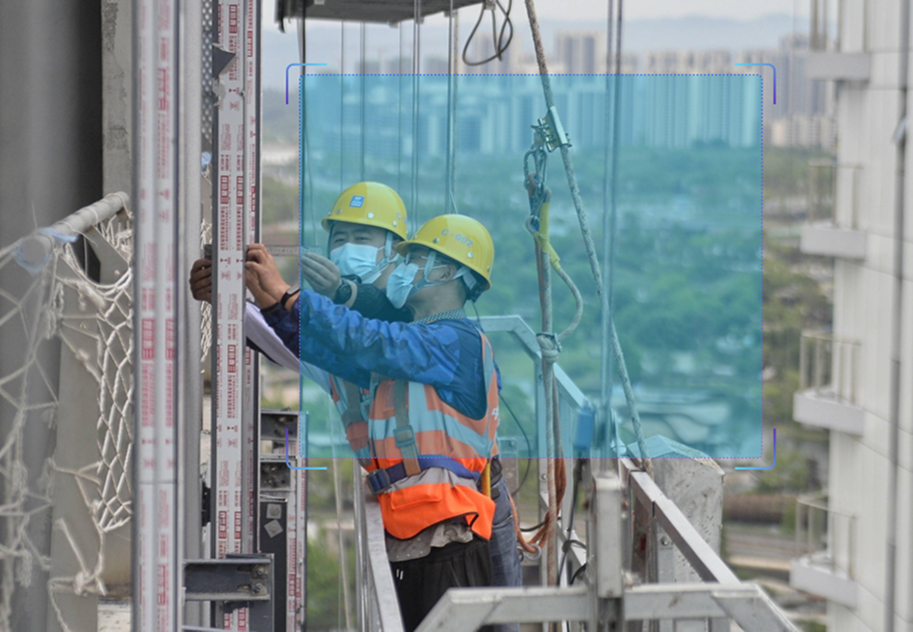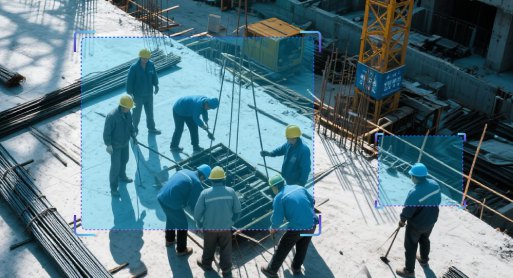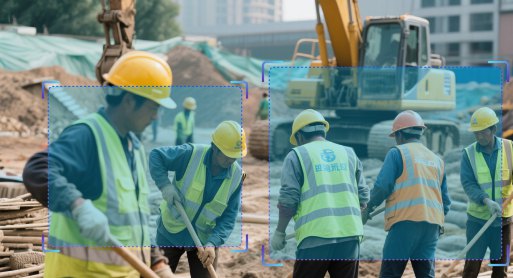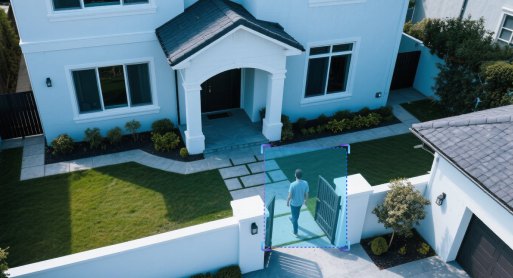
Safety Rope Wear Detection

Algorithm Introduction
The safety rope wear detection algorithm is a computer vision and artificial intelligence-based technology designed to monitor in real time whether workers are correctly wearing safety ropes (applicable to scenarios such as working at heights, climbing, and construction site operations). Its primary purpose is to prevent fall accidents and enhance safety management standards.
- ● Detection Category: Pedestrian Safety Rope Attributes (4 class labels: 'Rope Connected', 'Rope Disconnected', 'No Rope', 'Uncertain Judgment').
- ● Prerequisites: Camera height between 2–6 meters, camera angle ≥30° relative to the ground, and clear image quality ensuring structured detection of target individuals.
- ● Scene Requirements: Currently optimized for normal-brightness daytime conditions with good lighting. Performance in low-light/nighttime scenarios, strong backlight conditions (resulting in low target visibility), and adverse weather (rain, snow, fog) is not guaranteed.
- ● Target Requirements (Pedestrian): Target size ≥60 (width) × 120 (height) pixels, with a minimum Intersection-over-Union (IoU) of 0.8 between detected and ground-truth bounding boxes. Accuracy cannot be guaranteed for targets that are blurred, occluded, truncated, in crowded scenes, or at extreme angles/poses.
- ● Target Requirements (Safety Rope): Safety rope style must be distinctly red in color. Accuracy is not guaranteed for ropes where color/style is obscured due to distance or image quality, or for safety ropes in colors other than red.
Application Value
-

High-Altitude Operations
The algorithm detects if workers are wearing construction fall prevention equipment, specifically in high risk scenarios such as construction sites, exterior wall cleaning, and bridge inspections. It also enables mandatory wear detection during tower climbing and high-voltage line operations. -

Smart Security Systems
Integrated with smart construction site platforms to enable automated safety supervision.
FAQ
-
Algorithm AccuracyAll algorithms published on the website claim accuracies above 90 %. However, real-world performance drops can occur for the following reasons:
(1) Poor imaging quality, such as
• Strong light, backlight, nighttime, rain, snow, or fog degrading image quality
• Low resolution, motion blur, lens contamination, compression artifacts, or sensor noise
• Targets being partially or fully occluded (common in object detection, tracking, and pose estimation)
(2) The website provides two broad classes of algorithms: general-purpose and long-tail (rare scenes, uncommon object categories, or insufficient training data). Long-tail algorithms typically exhibit weaker generalization.
(3) Accuracy is not guaranteed in boundary or extreme scenarios.
-
Deployment & InferenceWe offer multiple deployment formats—Models, Applets and SDKs.
Compatibility has been verified with more than ten domestic chip vendors, including Huawei Ascend, Iluvatar, and Denglin, ensuring full support for China-made CPUs, GPUs, and NPUs to meet high-grade IT innovation requirements.
For each hardware configuration, we select and deploy a high-accuracy model whose parameter count is optimally matched to the available compute power.
-
How to Customize an AlgorithmAll algorithms showcased on the website come with ready-to-use models and corresponding application examples. If you need further optimization or customization, choose one of the following paths:
(1) Standard Customization (highest accuracy, longer lead time)
Requirements discussion → collect valid data (≥1 000 images or ≥100 video clips from your scenario) → custom algorithm development & deployment → acceptance testing
(2) Rapid Implementation (Monolith:https://monolith.sensefoundry.cn/)
Monolith provides an intuitive, web-based interface that requires no deep AI expertise. In as little as 30 minutes you can upload data, leverage smart annotation, train, and deploy a high-performance vision model end-to-end—dramatically shortening the algorithm production cycle.






